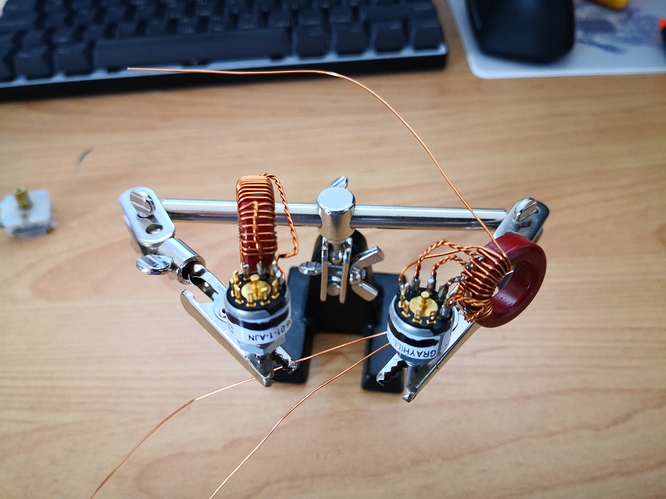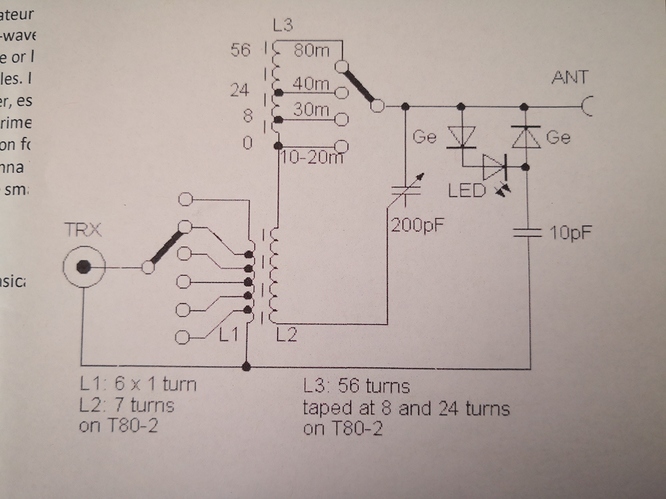Just finished the toroids this morning:
I used L3 as is from my old tuner, just shortened the leads a bit. However, I wanted to rewind L1 and L2 (coupling toroid) to get the windings as tight and neat as possible. I also left longer leads to get to the additional variable capacitor between L1 and ground.
Other improvements include shaping the holes in the enclosure with a file so they have flat sides to grip the switches and BNC. I’m trying to think of a way to improve the connections between common on the switches, and the input and output. I’ve plenty of time to think it over.
73 Matt

